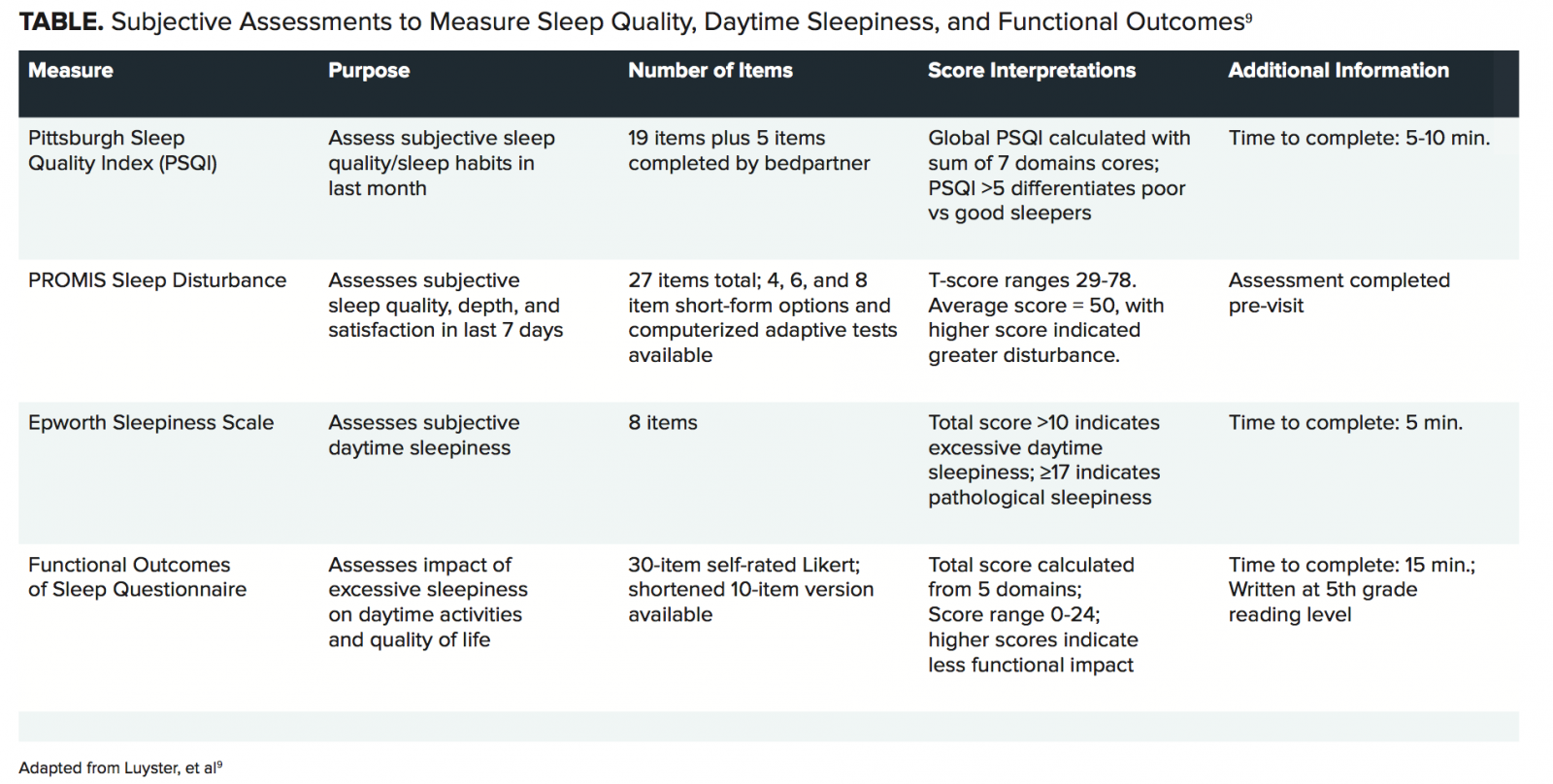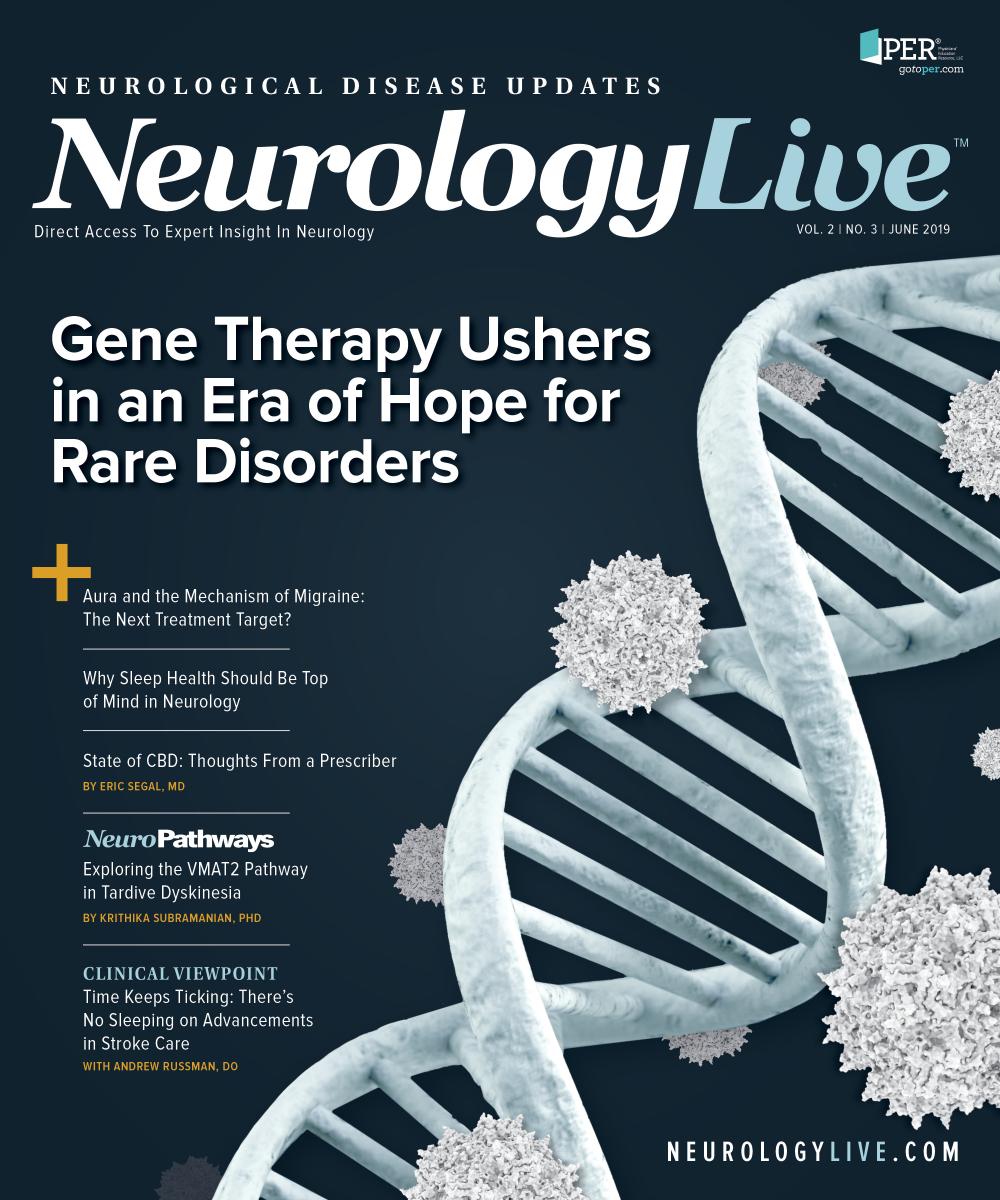Publication
Article
NeurologyLive
Why Sleep Health Should Be Top of Mind in Neurology
Author(s):
Sleep apnea and other sleep disorders are increasingly being recognized as major factors in the etiology and treatment of a host of neurological diseases, but awareness in the neurology community still has room to grow.
Phyllis C. Zee, MD, PhD, northwestern university feinberg school of medicine

Phyllis C. Zee, MD, PhD
The idea that sleep is important is anything but new. Sleep, after all, is on the list of recommendations after nearly every sick-visit to the family doctor. Indeed, sleep and fluids are often the only treatments necessary for patients to overcome many of the most common illnesses.
And yet, a growing body of evidence makes clear that sleep—and its role in our overall health—is anything but simplistic. While sleep quality can impact any number of spheres of health, its most direct impact appears to be in the field of neurology.
Phyllis C. Zee, MD, PhD, chief of sleep medicine at Northwestern University’s Feinberg School of Medicine, said the evidence linking sleep and neurology has quickly piled up over the past several years.
“A fundamental discovery that has changed the way we think about sleep is that although it is of the brain, its effects are for the entire body and can be seen in all tissues,” she told NeurologyLive. “Thus, impairments in sleep can have broad effects on neurological, metabolic, cardiovascular, and immune health, which in turn can increase the risk for neurological disorders such as stroke, neurodegeneration, neuromuscular disease, epilepsy, and movement disorders.”
As investigators have increasingly elucidated the mecha- nisms by which sleep impacts neurological health, clinicians and patients are beginning to gain a better understanding of the importance of sleep, although Zee said much work must be done to bring more attention to the matter.
“The mounting evidence is getting noticed, but it is still just a trickling effect,” she said.
To take just 1 example, recent research into the links between sleep apnea and stroke are striking. Results from the Sleep Heart Health Study1 showed that middle-aged and older adults have roughly twice the risk of stroke if they are diagnosed with obstructive sleep apnea (OSA). Not only was a strong correlation apparent between the 2 conditions, but the data also showed that the severity of OSA mattered; patients with milder cases of sleep apnea had a smaller increase in stroke risk, while patients with the most severe cases of sleep apnea had the highest risk for stroke. Investigators for the study, which followed more than 5000 patients for 9 years, also found that the risk for stroke was greater in men than women, although that may be due to a tendency for men to develop sleep apnea at a younger age than women.
In addition to being associated with an increased risk for stroke, evidence also exists indicating that OSA and other sleep disorders that affect breathing can have a poor effect on outcomes after a patient experiences a stroke. Data from a 2009 study2 of 60 patients with ischemic stroke, 39 of whom also had sleep-disordered breathing, demonstrated that patients with comorbid sleep disorders experienced slower functional recovery at 90 days poststroke compared with patients who did not have a sleep disorder.
Bidirectional Relationship
Michael J. Thorpy, MB, ChB, professor of neurology at Albert Einstein College of Medicine in New York, told NeurologyLiveTM that the causal relationships between sleep and neurological disorders are bidirectional.
“It’s a 2-way thing,” he said. “Neurological disorders are often associated with disturbed sleep, because sleep is a function of the brain, and when you have a neurological disorder that affects the brain, then it’s going to affect sleep/wake mechanisms.”
For instance, in Parkinson disease, Thorpy said patients often experience a very severe disruption of sleep/wake processes prior to the onset of the primary features of Parkinson. The disease itself also causes neurodegeneration that in turn can lead to significant sleep disturbances for patients.
A similar relationship has been observed between sleep disruption and Alzheimer disease dementia. This is especially concerning since studies have estimated that 30% to 80% of elderly adults have OSA.3,4
A 2017 study by Sharma and colleagues5 explored the impact of OSA on cognitive health over time in healthy, cognitively normal older adults aged 55 to 90. The investigators found that patients with OSA had higher cerebrospinal fluid amyloid burden compared with patients without OSA. Based on the findings, the investigators hypothesized that sleep fragmentation and/or intermittent hypoxia associated with OSA are “likely candidate mechanisms. If confirmed, clinical interventions for OSA may be useful in preventing amyloid build-up in cognitively normal elderly,” they concluded.
Thorpy said that even when no apparent mechanistic link exists between poor sleep and a particular neurological disease, the former can still affect the latter.
Investigators who conducted a meta-analysis published in Sleep6 found wide-ranging deficits in executive function among patients with OSA. They assessed 5 subdomains of executive function—shifting between tasks, updating and monitoring, inhibition of dominant mental responses, generating new information, and fluid reasoning—and found that all 5 subdomains were significantly impaired in patients with OSA independent of age or disease severity. Notably, the investigators found that small to medium improvements in all 5 subdomains were apparent with the use of continuous positive airway pressure (CPAP) treatment. That finding is important, as Thorpy noted that patients with poor sleep might have more difficulty coping with their neurological disease.
“Helping the underlying respiratory disturbance during sleep can help significantly, not in terms of slowing the underlying neuropathological process, but it can help the patient deal with the neurological symptoms,” he said.
Zee said patients who can improve their sleep, whether through CPAP treatment or behavioral modification, can have significant gains in their quality of life.
“Because sleep disturbances are so common in neurological disorders, and because of the bidirectional relationship between sleep and health, improving sleep can improve quality of life, and for some disorders, even alter their progression,” she said.
Indeed, findings from a study led by Dawn M. Bravata, MD, of Indiana University School of Medicine,7 suggested that diagnosis and treatment of OSA in patients who had experienced an ischemic stroke or transient ischemic attack improved the odds of having better functional neurological outcomes as measured by the National Institutes of Health Stroke Scale.
“The results demonstrate that CPAP therapy for patients with ischemic stroke or TIA [transient ischemic attack] who have sleep apnea was associated with statistically significant and clin- ically relevant improvements in neurological symptoms and functional status,” Bravata and colleagues wrote.
In epilepsy, Thorpy noted that poor breathing during sleep can trigger a seizure, suggesting that better sleep might even help prevent an episode.
“If a patient has some concurrent OSA and oxygen levels go low, it may precipitate an epileptic episode in that particular patient,” he said.
The importance of screening for and treating sleep disorders in this population was reinforced by a study recently presented at the 2019 American Academy of Neurology Annual Meeting by Thapanee Somboon, MD, of Cleveland Clinic, and colleagues.8 The investigators screened 270 patients with epilepsy for insomnia, as well as depression, anxiety, and overall quality of life.
Scores on the Insomnia Severity Index (ISI) indicated that nearly 50% of patients had symptoms of clinical insomnia, while 23% had clinical insomnia of moderate-to-severe severity. The investigators also observed a positive correlation between ISI score and measures of depression, anxiety, and quality of life, as well as monthly seizure frequency. Notably, no significant correlation was noted between ISI and epilepsy type, number of antiepileptic drugs used, or lamotrigine use.
Somboon and colleagues concluded that, “Given the potential therapeutic benefits of treating sleep disorders on seizure control, routine screening of insomnia symptoms is warranted.”
Barriers to Screening
Despite the fact that evidence continues to pile up supporting routine sleep disorder screening, the rate at which that is happening is very poor, even among neurologists.
Many clinicians may not be aware of all of the latest science that demonstrates the interconnectedness of sleep and other disorders, Thorpy said.
“Particularly in neurology, because the disorders are rather complex and often difficult to treat,” he said, “it is very easy to get focused on the primary underlying neurological disorder and ignore or not recognize a sleep disorder” despite sleep medicine becoming a bigger part of the health care industry.
“Neurologists who are sleep specialists have a particular focus and understanding of this,” he said. “But the average neurologist is pretty well focused on their area of expertise.”
In fact, Thorpy said most neurologists undergo very little training in sleep disorders during medical school and postdoc- toral training and may not be well-versed in the available clinical sleep assessments (TABLE).9

Despite this professional gap in knowledge and awareness, Zee said she believes that the general public is beginning to under- stand the importance of sleep in overall health, noting that the days of people bragging about pulling an all-nighter or working on only a few hours rest are beginning to wane.
“The negative consequences of sleep deficiency on health and the risk for safety are being increasingly recognized as part of an increased emphasis on work—life balance,” she said. Still, a significant portion of society believes that sleep is “expendable,” and the advent of technologies that have enabled us to always be “on” have made this expectation harder to conquer.
Efforts to Improve Awareness
Although many advancements have been made in under- standing the relationship between sleep and neurologic disorders, many more questions remain. Asked about the most important outstanding research questions related to sleep disorders and neurological health, Thorpy said we need a better understanding of the sleep/wake processes.
“Just very recently we recognized that for narcolepsy there was a loss of specific cells in a part of the brain,” he said. “We didn’t even know those cells existed, and now we recognize that these hypocretin cells are the primary deficit of patients who have narcolepsy with cataplexy.”
He also said more research must be done to understand the effects of Parkinson on rapid eye movement sleep. He would also like to see more research on the association of dementia with sleep disorders, and additional work to develop better treatments for OSA.
“Unfortunately, treatments are still pretty basic,” he said. “CPAP is a pretty barbaric treatment, having to sleep with a mask over your face every night. There’s no question we need new treatments.”
Before OSA can be treated, though, it must be diagnosed.
In 2017, the US Preventive Services Task Force (USPSTF) sought to make screening recommendations regarding OSA in asymptomatic adults.10 They found insufficient evidence to make a recommendation, despite the fact that the American Academy of Sleep Medicine now estimates that more than a quarter (26%) of Americans aged between 30 and 70 years have symptoms of sleep apnea.11
The USPSTF wrote that the 2 best-studied screening question- naires, the Berlin Questionnaire and the Multivariable Apnea Prediction tool, lacked sufficient data to prove their accuracy. The USPSTF found better accuracy in some types of portable sleep monitors, but wrote that it was unclear how these monitors would perform in asymptomatic, screen-detected patients.
“Overall, the USPSTF was unable to determine the magnitude of the benefits or harms of screening for OSA or whether there is a net benefit or harm to screening in asymptomatic adults or adults with unrecognized symptoms,” the Task Force wrote.
Without clear guidelines, neurologists are left with difficult questions regarding when and why to screen patients for sleep problems like OSA. While there are common risk factors and characteristics that have been identified as associated with OSA, namely obesity and male sex, those broad factors do little to narrow down the large pool of prospective patients.
Thorpy suggested that the most important thing is for neurologists to be aware that sleep disorders may be part of the problem.
“I think it is hard to get a neurologist to do a screening of every patient just looking for a sleep disorder, but I do think neurologists need increased awareness of the primary symptoms of sleep disorders,” he said.
He noted that patients with narcolepsy often wait several years from the onset of symptoms before they receive an accurate diagnosis.
“Unless you’re thinking about it, it is very easy to miss and to be focused on your primary area of medical specialty,” he said.
What if a tool existed to help keep sleep disorders top-of-mind for clinicians?
Last year, investigators created a screening tool that could be embedded directly into an electronic health record (EHR). Based on 12 recognized risk factors for sleep apnea, the system was designed to alert clinicians when a patient with epilepsy had 2 or more risk factors. The alerts were tested over a 3-month period.
The results, published in Neurology,12 were compelling. Prior to the alert system, just 7% of patients were referred for polysomnography. Once the alert was put in place, the rate increased to 33%.
“It was found that placing this mandatory alert for providers to screen for OSA in the EHR markedly increased the detection of at-risk epilepsy patients who should be referred for a sleep study,” said coauthor Xue Ming, MD, PhD, professor of neurology at Rutgers New Jersey Medical School, in a statement.13 “Such screening can lead to early detection and treatment, which will improve the quality of life of patients with epilepsy and OSA.”
Aside from EHR alerts, Zee said a clinician can ask their patient some simple questions to ascertain whether further investigation is needed.
“Do you have difficulty falling asleep or staying asleep? Do you snore, gasp for air, or have been told you stop breathing during sleep? Are you sleepy during the day?” she recommended.
Such questions can be asked relatively quickly, and the answers to those questions can go a long way toward helping a clinician understand whether sleep issues might be playing a role in a patient’s underlying health concern.
Whether poor sleep plays a direct or indirect role, it is vital for neurologists to recognize the many ways that it can affect the management of a neurologic disorder. Specifically, Thorpy suggested that sleep problems can make a patient less likely to be compliant and adherent to their prescribed treatment—a hurdle that most neurologists face when treating chronic disorders like epilepsy.
“It is very important that neurologists understand that sleep is not a peripheral thing,” he said. “It is integral to the management of patients with neurological disorders.”
REFERENCES
1. Redline S, Yenokyan G, Gottlieb DJ, et al. Obstructive sleep apnea-hypopnea and incident stroke: the Sleep Heart Health Study. Am J Respir Crit Care Med. 2010;182(2):269-277. doi: 10.1164/ rccm.200911-1746OC.
2. Yan-fang S, Yu-ping W. Sleep-disordered breathing: impact on functional outcome of ischemic stroke patients. Sleep Med. 2009;10(7):717-719. doi: 10.1016/j.sleep.2008.08.006.
3. Ancoli-Israel S, DuHamel ER, Stepnowsky C, Engler R, Cohen-Zion M, Marler M. The relationship between congestive heart failure, sleep apnea, and mortality in older men. Chest. 2003;124(4):1400-1405.
4. Mehra R, Stone KL, Varosy PD, et al. Nocturnal arrhythmias across a spectrum of obstructive and central sleep-disordered breathing in older men: Outcomes of Sleep Disorders in Older Men (MrOS sleep) Study. Arch Intern Med. 2009;169(12):1147-1155. doi: 10.1001/ archinternmed.2009.138.
5. Sharma RA, Varga AW, Bubu OM, et al. Obstructive sleep apnea severity affects amyloid burden in cognitively normal elderly. a longitudinal study. Am J Respir Crit Care Med. 2018;197(7):933-943. doi: 10.1164/rccm.201704-0704OC.
6. Olaithe M, Bucks RS. Executive dysfunction in OSA before and after treatment: a meta-analysis. Sleep. 2013;36(9):1297-1305. doi: 10.5665/sleep.2950.
7. Bravata DM, Sico J, Vaz Fragoso CA, et al. Diagnosing and treating sleep apnea in patients with acute cerebrovascular disease. J Am Heart Assoc. 2018;7(16):e008841. doi: 10.1161/ JAHA.118.008841.
8. Somboon T, Pascoe M, Eippert M, et al. Insomnia in epilepsy: association between insomnia symptom severity and disease-related characteristics. Presented at: 2019 American Academy of Neurology Annual Meeting; May 4-10, 2019; Philadelphia, PA. indexsmart.mirasmart.com/ AAN2019/PDFfiles/AAN2019-001358.pdf.
9. Luyster FS, Choi J, Yeh CH, Imes CC, Johansson AE, Chasens ER. Screening and evaluation tools for sleep disorders in older adults. Appl Nurs Res. 2015;28(4):334-340.
10. US Preventive Services Task Force; Bibbins-Domingo K, Grossman DC, Curry SJ, et al. Screening for obstructive sleep apnea in adults: US Preventive Services Task Force recommendation state- ment. JAMA. 2017;317(4):407-414. doi: 10.1001/jama.2016.20325.
11. Rising prevalence of sleep apnea in U.S. threatens public health [news release]. Darien, IL: American Academy of Sleep Medicine; September 29, 2014. aasm.org/rising-prevalence-of- sleep-apnea-in-u-s-threatens-public-health/. Accessed May 2, 2019.
12. Mulvey MA, Veerapandiyan A, Marks DA, Ming X. Electronic health record cue identifies epilepsy patients at risk for obstructive sleep apnea. Neurol Clin Pract. 2018;8(6):468-471. doi: 10.1212/ CPJ.0000000000000502.
13, New screening tool can improve the quality of life for epilepsy patients with sleep apnea [news release]. New Brunswick, NJ: Rutgers Today (Rutgers, The State University of New Jersey); September 27, 2018. news.rutgers.edu/research-news/new-screening-tool-can-improve-qual- ity-life-epilepsy-patients-sleep-apnea/20180926#.XNsKRNMrJTY. Accessed May 2, 2019.




